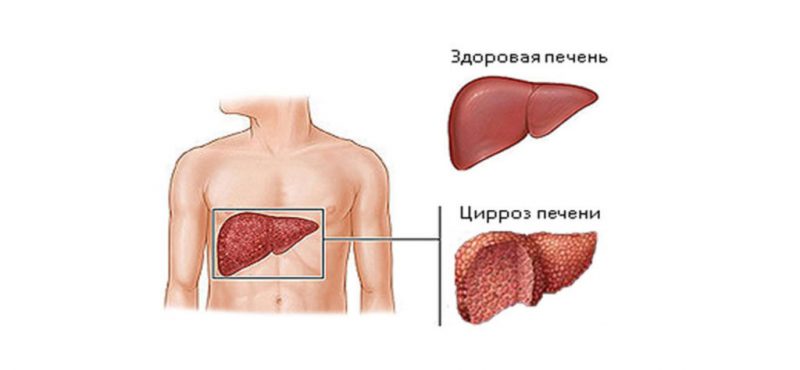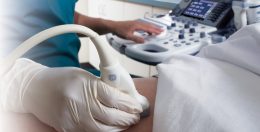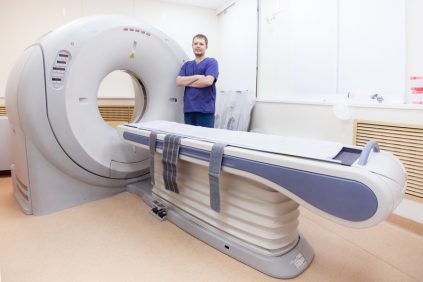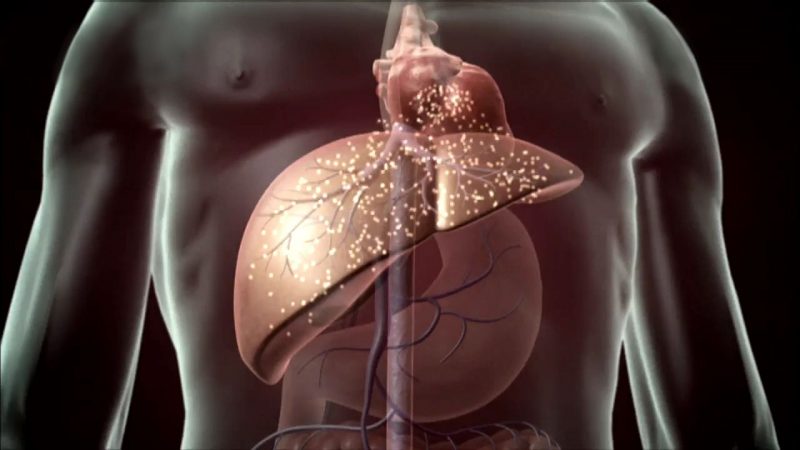Unfortunately, such a serious disease as cirrhosis affects men 3-4 times more often than women of the opposite sex. Therefore, it is even called a male disease. More than 40 million people die from this disease every year around the globe. For this reason, it will not be superfluous to know the signs of liver cirrhosis in men in order to make a diagnosis in time and begin treatment.
Material Content:
Causes of liver cirrhosis in men
This chronic liver disease is characterized by persistent organ damage. In this case, normal tissue is replaced by fibrous tissue over time. This leads to the fact that the body cannot perform its direct functions - purification of blood from toxins, synthesis and production of necessary substances.
The most common causes are:
- alcohol abuse (alcoholic cirrhosis);
- some chronic hereditary autoimmune diseases;
- viral hepatitis and, as a result, pathological damage to the liver tissue;
- malnutrition;
- metabolic disturbance;
- poisoning with heavy metals, a variety of poisons, low-quality food or drugs.
It should be noted that the combination of several of the above factors, for example, hepatitis C, along with alcohol dependence, increases the risk of pathology tenfold. Alcohol cirrhosis is ubiquitous.
The main symptoms in the early stages
The disease is characterized by a staged course. Depending on the time when the disease was determined, and the degree of damage, the prognosis of life expectancy is very different.
 At the compensated stage, approximately half of the sick live approximately 8–9 years, with subcompensated - no more than 5 years, decompensated - at most 3 years. The formed cirrhosis, unfortunately, is considered an irreversible condition.
At the compensated stage, approximately half of the sick live approximately 8–9 years, with subcompensated - no more than 5 years, decompensated - at most 3 years. The formed cirrhosis, unfortunately, is considered an irreversible condition.
The first signs of cirrhosis can be easily confused with something else. The patient may not even suspect a serious illness.
Signs at an early stage are very weakly expressed and can manifest themselves only in the form of increased fatigue and short-term pain in the right side under the ribs. Sometimes the patient notices a lack of appetite.
An important nuance - discomfort in the hypochondrium most often appears after eating, drinking alcohol or during sports. If this alerts the patient and he passes a blood test, the results will show a decrease in the level of bilirubin and the prothrombic index.
With early detection of pathology, the prognosis of treatment is still favorable. The main goal of therapy is the restoration of liver cells, since the pathological process has just begun, and the dead elements are gradually being replaced by fibrous tissue. Decomposition of the liver at this stage is not yet diagnosed, and the inflammatory-necrotic process is only at the beginning.
Symptoms of the disease during the period of subcompensation
The second stage of the disease is called subcompensated. Symptoms of liver cirrhosis in men at this stage are more pronounced:
- decreased performance;
- constant feeling of weakness;
- unpleasant feeling of bitterness in the mouth;
- headache;
- discomfort in the joints;
- fever;
- decreased appetite;
- bleeding gums;
- frequent pain in the abdominal cavity, localized on the right side;
- noticeable weight loss;
- thinning hair;
- frequent bouts of nausea;
- darkening of urine and lightening feces;
- breast enlargement.
Laboratory tests confirm a decrease in albumin. Tissues begin to scar and compact, which becomes noticeable even upon palpation. At this stage, the main task of therapy is to quickly transfer the disease to a compensated form to the maximum. At this time, the first signs of liver failure begin to appear - a violation of many organ functions.
Diagnosis
Diagnostics, as a rule, includes such methods:
- blood tests;
- examination of the patient, collection of medical history data;
- CT
- Ultrasound
- fecal analysis;
- laparoscopy;
- liver biopsy;
- scintigraphy.
Examination with ultrasound determines the enlargement of the spleen and liver, compaction and deformation of the latter. General blood and urine tests help to identify elevated levels of white blood cells, red blood cells and protein, which indicates the presence of pathology. Low hemoglobin can also indicate a disease.
By the intensity of staining of the skin and mucous membranes, an experienced doctor can easily determine the stage of the disease. If at the initial stages the hue approaches orange-yellow, then in the midst of the disease the epithelium acquires a yellow-greenish color. The neglected stage is characterized by a brown-bronze tint of the skin.
The period of severe symptoms of liver cirrhosis
The third stage of the disease is difficult to treat. Symptoms intensify, the patient complains of such signs:
- sharp pains;
- bloating;
- muscle atrophy;
- general exhaustion;
- exhausting attacks of nausea and vomiting;
- rapid weight loss;
- weakness;
- sleep disturbances;
- yellowing of the skin and mucous membranes.
At this stage, coarse fibrous tissue affects more than half of the organ, due to which almost all liver functions are impaired. Serious complications are often found in patients - oncology, internal hemorrhages, peritonitis and other pathological conditions that threaten death.
Terminal stage
The disease in the final (4th) stage, even using modern methods and drugs, is not amenable to treatment. This is the last stage of organ necrosis, which is characterized by severe symptoms:
- unbearable pain;
- intolerable itching;
- insomnia;
- heavy internal bleeding;
- complete rejection of food and drink;
- amyotrophy;
- partial or complete loss of memory and motor abilities;
- chronic intoxication of the body;
- depressive state;
- fluid accumulation in the abdominal cavity;
- hypoxia of the brain.
The skin of the face becomes reddish-brown, small tumors with fatty filling appear on the eyelids, the stomach acquires a bluish tint. In most cases, the patient is in a coma. As a rule, the patient does not come out of the coma and dies.
In other cases, treatment is ineffective, and only one prognosis is death. Doctors can only prescribe narcotic drugs to relieve severe pain.
As an alternative, it is sometimes proposed to carry out an organ transplant, however, such an intervention is very risky, in addition, it has a lot of contraindications. The rejection rate of a foreign organ is very high, almost 50 to 50. According to statistics, even with a transplant, the patient's maximum life expectancy is not more than 2 years.
Most complications at this stage sooner or later lead to death. Without surgery, the patient can live from 3-4 weeks to 12 months.
This terrible disease is better to prevent. The best way to prevent it is to give up alcohol, maintain a healthy lifestyle, and eat right. It is advisable for all men from 45 years of age to do an ultrasound of the liver once every 12 months in order to detect the first symptoms of the disease in time and start treatment on time.

















